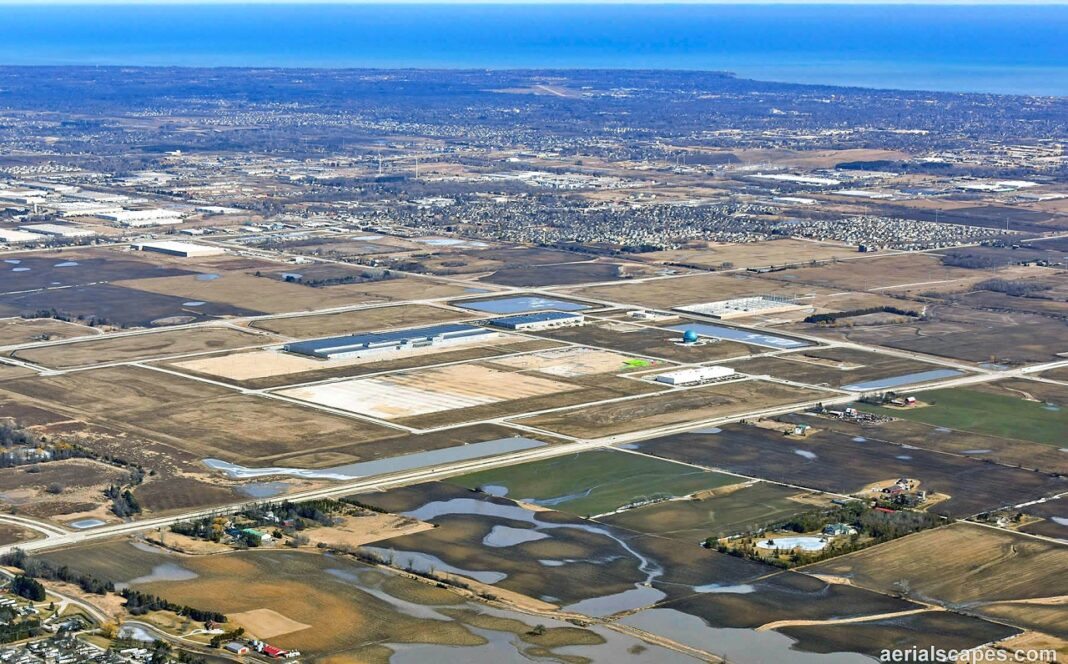Microsoft’s plans to potentially invest
$1 billion in a data center campus in Mount Pleasant would help repay debt the village took on for the Foxconn project and would also reimburse Foxconn for a portion of a $60 million advance it provided to fund land acquisition.
Microsoft is planning to buy 315 acres from Mount Pleasant for nearly $50.1 million. The proceeds of that sale would go to Foxconn as reimbursement for the land acquisition advance after covering the village's costs in the sale to Microsoft.
When Foxconn initially selected Mount Pleasant for a planned Gen. 10.5 LCD screen fabrication facility in 2017, local officials set out to acquire almost 3,000 acres of land to support Foxconn’s development. The arraignment called for Foxconn to have the rights to develop or direct the use of the land, but it was initially acquired by the village.
Those plans included Foxconn being reimbursed for the advance, either as the village sold properties off to Foxconn’s suppliers or others locating in the project area or through elements of the tax incremental financing district supporting the project.
Village, regional and state officials on Monday announced plans for Microsoft to develop a data center campus in the Foxconn project area. It would be located on the eastern edge of what was referred to as Area III. The land is located to the east of the railroad, south of Braun Road and west of 90
th Street.
Site plans included in village documents show the Microsoft data centers totaling in the neighborhood of 1.4 million square feet, although the plans do not include precise figures.
The documents are part of three items the Mount Pleasant village board will consider on Thursday, including the land sale, a development agreement with Microsoft and an implementation agreement with Foxconn.
In addition to Foxconn releasing its rights to the land Microsoft is buying, the proposal spell out how Microsoft’s investment would contribute to the TIF district created to enable Foxconn’s project.
In a traditional TIF district, additional tax revenues created by a development growing the property value in a district are used to pay off the investments needed to help facilitate a project or redevelopment.
Under the terms of the agreements, the additional tax revenues generated by Microsoft’s investments would go first to pay 12% of the village’s priority municipal debts, then to pay 12% of the village’s cost of service and facilities for the TIF district and then to pay 12% of three years of debt service payments.
The structure means that Foxconn would still be required to maintain its obligations under the agreements it originally signed with the village. When those deals were signed Foxconn was planning a much larger development that what it has built to date.
The deals required Foxconn’s main project area to be worth $1.4 billion
by the start of 2024. As of October, the land was assessed at roughly $550 million. If the property’s value does not reach the required level, Foxconn will still have to pay taxes as if it did.
Capping the contribution from Microsoft’s investment at 12% of debt service, roughly equal to the amount of land the company is using within the project area, would keep Foxconn on the hook, even if Microsoft’s project is generating enough additional tax revenue to cover more of the costs.
While the initial Microsoft project calls for the company to make a $1 billion investment, the proposed agreement between the village and company includes a reference to an additional $1 billion investment. The two sides would agree to work in good faith toward additional incentives if the company were to commit to the second $1 billion investment.
As it stands, Microsoft could receive or recover up to $5 million annually from its property tax payments on the investment after the village has made required debt payments.
The deal gives Microsoft until July 1, 2026 to start work on the first phase of its data center campus and July 1, 2033 to start work on the second phase.
If the company does not start work, the village could repurchase the land at the per acre price Microsoft is buy it at or around $159,000 per acre.
The potential $5 million annual incentive for Microsoft is tied to the value of the property and the company’s investment in it. The development agreement does not address any potential job creation from the project.
It is possible Microsoft could still receive additional incentives from the Wisconsin Economic Development Corp. Missy Hughes, the organization’s secretary and CEO, was quoted in the release announcing the data center campus.
Asked if any incentives were in the works, David Callender, WEDC director of communications, noted WEDC’s practice is “not to comment on any discussions we may or may not be having with businesses unless and until a contract has been approved.”


